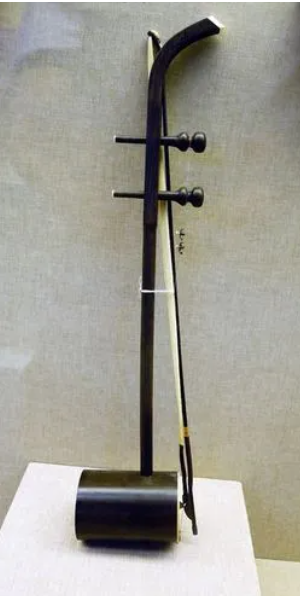The historical development of Xiqin
Xiqin, a stringed instrument. Began in the Tang Dynasty, also known as Ji (tongxi) qin. It has a long history and simple shape. The pronunciation is soft and the timbre is pleasant. Can be used solo, ensemble, or to accompany song and dance.

Tang and Song Dynasties
During the Tang and Song Dynasties, Xiqin was both a stringed instrument and a stringed instrument, with both playing methods.
Ouyang Xiu, a literati in the Northern Song Dynasty who was the same era as Chen Yang, wrote in his poem "Wen Xiqin Works in the Examination Court": "Xiqin is originally composed of Hu people's music, and when Xi slaves play it, tears fall." The playing method is plucking, and there is no meaning of "rolling it with bamboo pieces".
Another poem has quite detailed records: "When Xiren made a qin, he immediately started, and the strings were very clear and strong with double cocoons. When he heard the wind and snow in the high hall, the seated guests turned down to be sad. When he went deep into the cave, he resisted the flute like a song, and the sounds It is suspected that this is the most, and the poor hands are not interrupted, who says that the sound of silk is not as good as that of bamboo." This is obviously the two-stringed plucked instrument Xiqin. It can be seen that in the Tang and Song dynasties, Xiqin was in the transition period from playing stringed instruments to pulling stringed instruments.
Song Dynasty
The Xiqin of Song Dynasty is also called Jiqin.
In 1080 AD written by Gao Cheng, it was recorded that Jiqin was still produced by plucking the strings in the Northern Song Dynasty, rather than a stringed instrument with rolling strings. In Song Dynasty Chen Yuanliang's "Shi Lin Guang Ji" (Volume 8), it is clearly recorded that the jiqin is a stringed instrument.
To attribute the Jiqin to Jikang in the 3rd century AD is obviously a kind of affiliation of the ancients. Both are from the Song Dynasty, and they are also the same as the description of Jiqin, but they record two different playing methods. This fully shows that Jiqin in Song Dynasty was still in the transitional stage from playing stringed instruments to pulling stringed instruments.
Late Song Dynasty
In the late Song Dynasty, the northern frontier areas of China had begun to use the horse tail as a bow-hair-pulled-stringed musical instrument. In the frescoes of the tenth cave of the Yulin Grottoes in Shaanxi, there is a picture of a flying instrument playing the frontispiece, two strings, two strings, and cylindrical qin barrels with a ponytail bow. On the scripture building of Yanshan Temple in Fanzhi County, Shanxi Province (the "Pagoda of Grand Master Guangji"), there is a line engraved with musical instruments. One person is sitting cross-legged, holding a ponytail bow and playing.
During the Southern Song Dynasty
The Xiqin type of stringed instruments began to develop. A large number of silk strings for musical instruments in China also began when the Southern Song Dynasty moved the capital to Lin'an (now Hangzhou), so silk strings are called "Hang strings".
In the notes and novels of literati at that time, it was also mentioned from time to time. In the story of "Jin Yan Yu Chun meets Chun Niang" in "New Words from the Green Window", it was written: "Jin Yan and He Yu went out of the city for a spring tour in the west, and saw a gorgeous courtyard. , is Wang Taiwei Village. Sitting on the pavilion with wine, Yan took the second string and rolled it, and Yu took the xiaoguan ensemble." This "two string" is a stringed instrument very similar in shape to the Xiqin.
Ming Dynasty
With the rise of drama and quyi, it has improved and developed, and the performance forms are also varied. In the first year of Jiajing in Ming Dynasty (AD 1522), You Ziqiu's painting "Lintang Autumn Banquet", we can see a kind of ensemble form composed of Xiqin, Xiaoguan and clapboard. , is the dragon head, rolled neck, two strings, horse tail bow, and has a thousand pounds to fix the length of the string. This is not found in the Xiqin diagram in Chen Yang's "Book of Music", but it also retains the Xiqin's shorter barrel, axis orientation and string tying method. Compared with the Erxian in the Southern Song Dynasty "Green Window New Words", it has made great progress.
 渝公网安备 50010702504639号
渝公网安备 50010702504639号